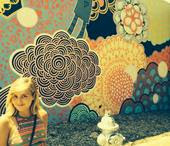After reading the article by Kathleen Clark, I have been enlightened on some great coaching skills that could be used for students like Louis. Unfortunately, I was not fully aware of the different techniques of coaching that could be used before last summer. I was very interested to learn about the two instructional cues that can be used when coaching: general cues which help guide a children to an idea or thought and focused cues which lead a student to the next step.
In Chapter 5 of Classrooms that Work: They Can All Read and Write, Patricia M. Cunningham and Richard L. Allington explain some great activities that can help a student learn to recognize words, the similarities between words, and thus using this knowledge to spell new words. I really liked the various activities where a teacher would put a sentence on the board and would cover up one or a few words. The students then had to look at the context of the sentence and figure out what the hidden words were.
This photo that I retrieved from Pinterest helps a teacher guide a student through reading in 3 different ways. A student can start by just looking at the pictures and talking about what the meaning of a word could be. They can use their memory and previous knowledge. Lastly, they could read the words and the letters to try and figure out the meaning. Because context is so important, I thought these ways of reading could be useful.
Questions to Ponder
1. What experiences have you had with assisting a child to read (coaching)?
2. What instructional cues have you found are more effective (general or focused)?




